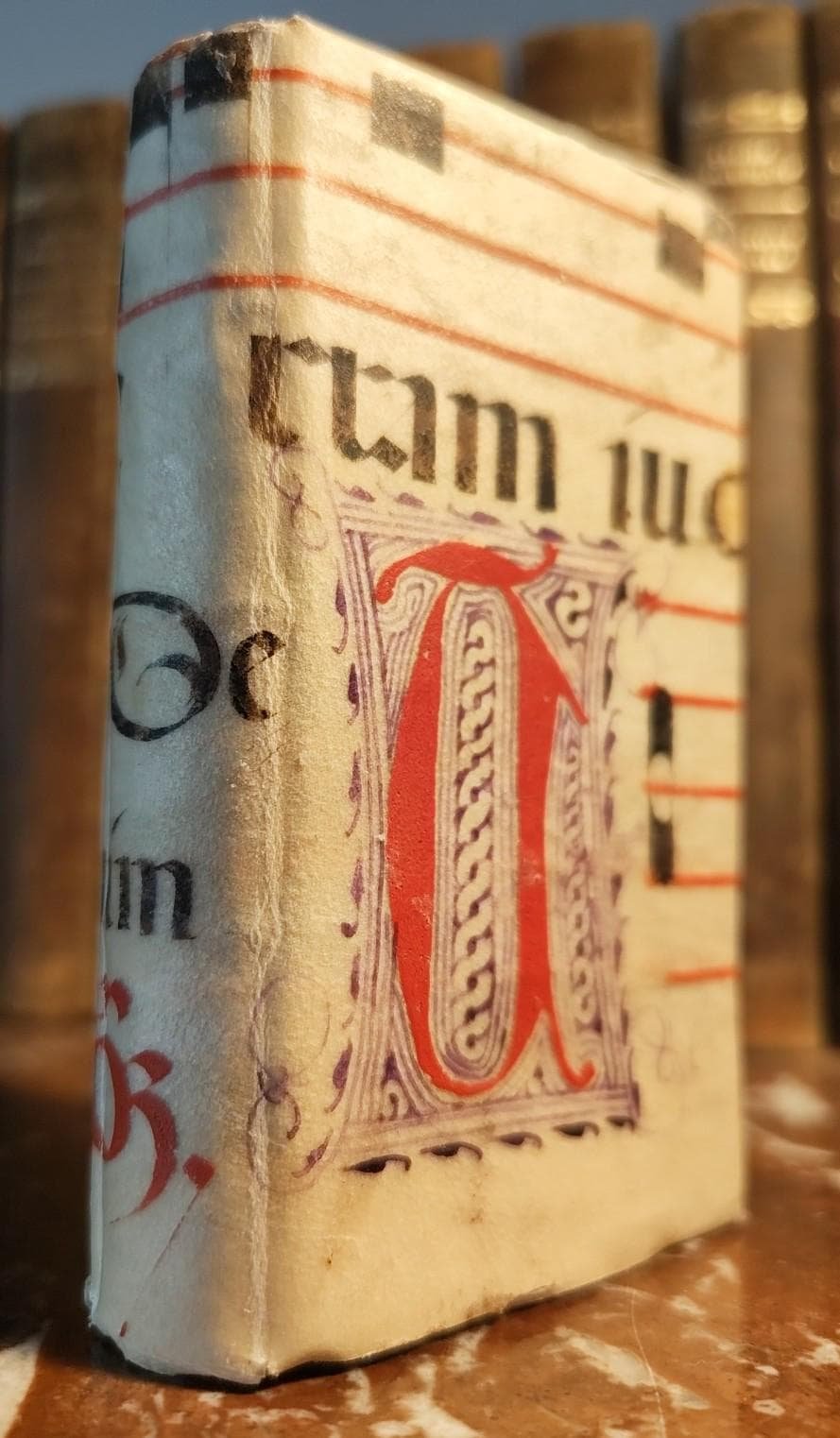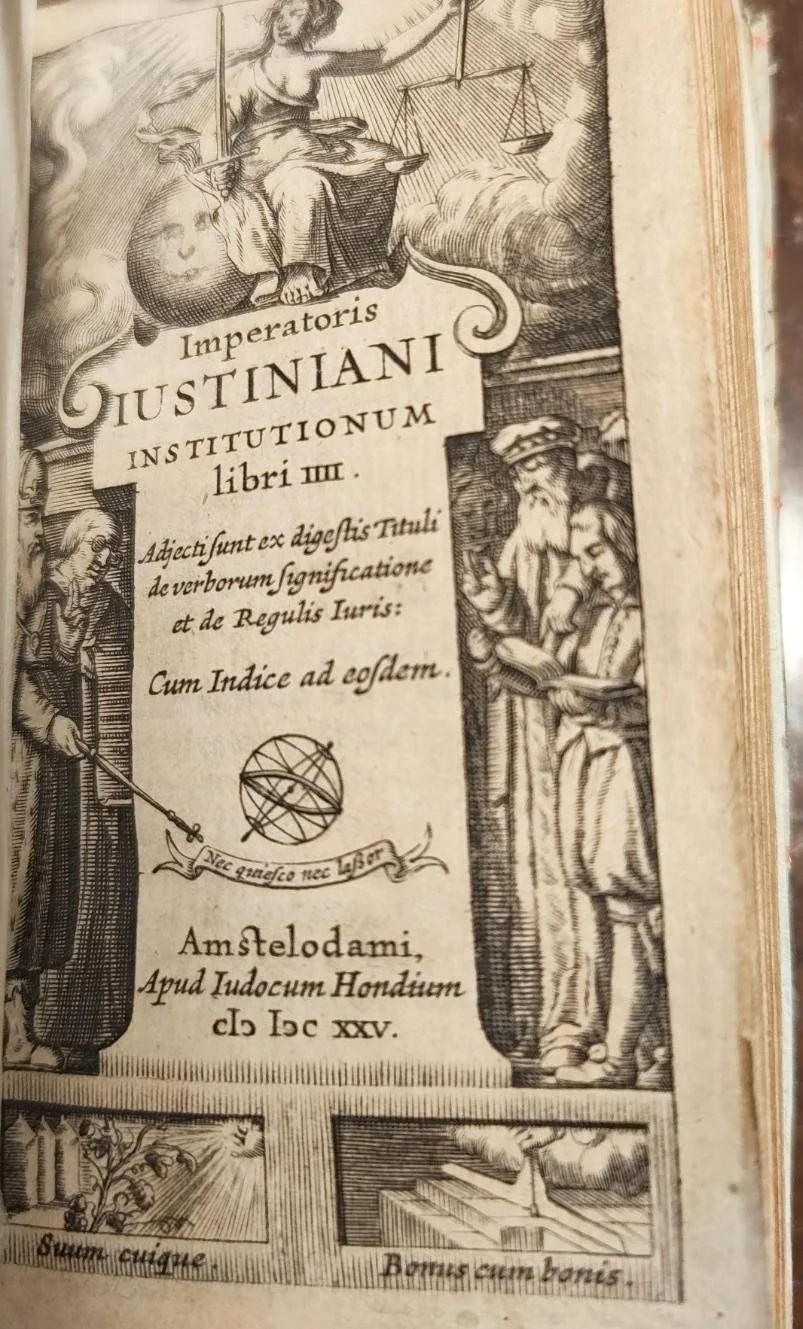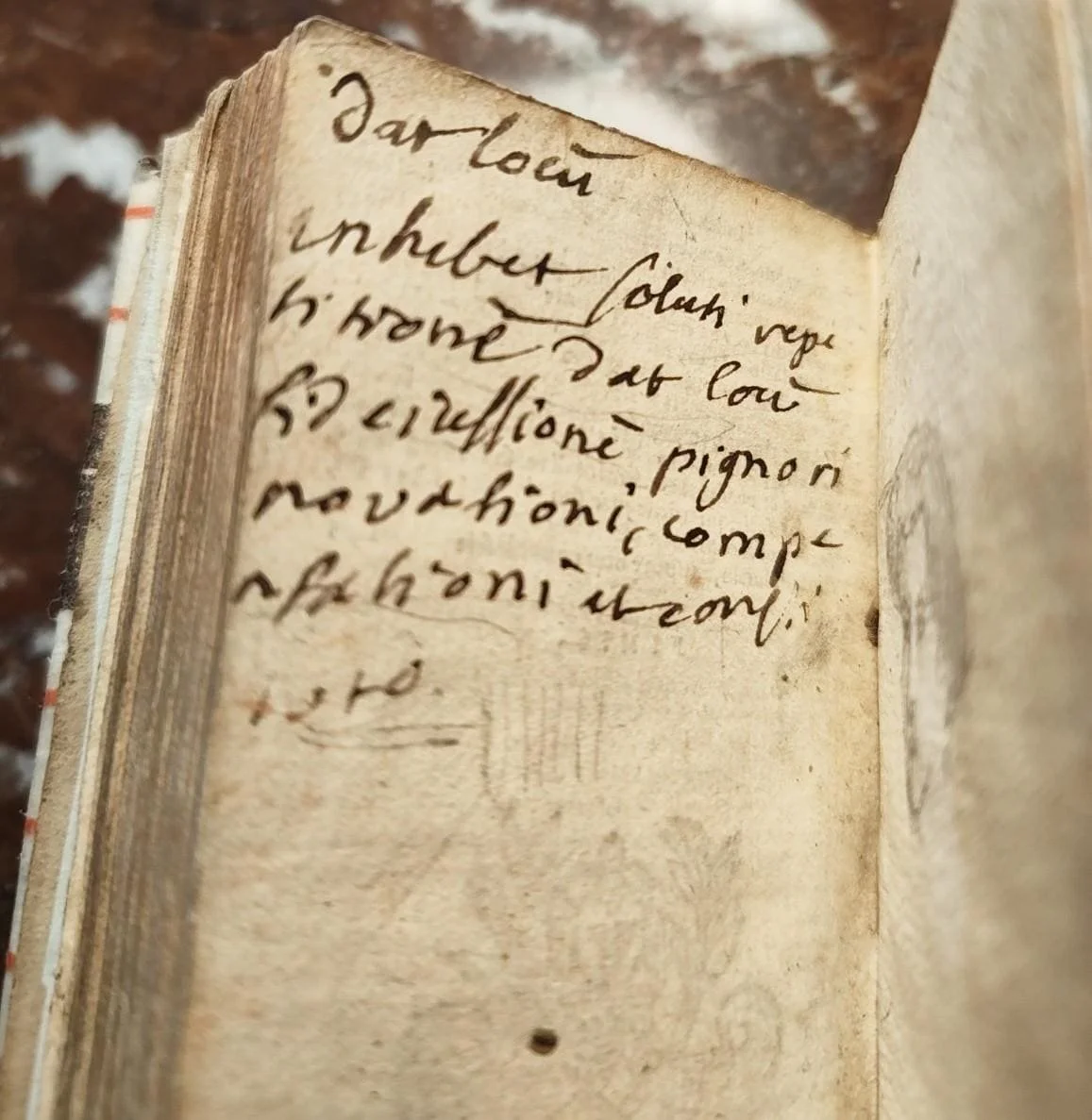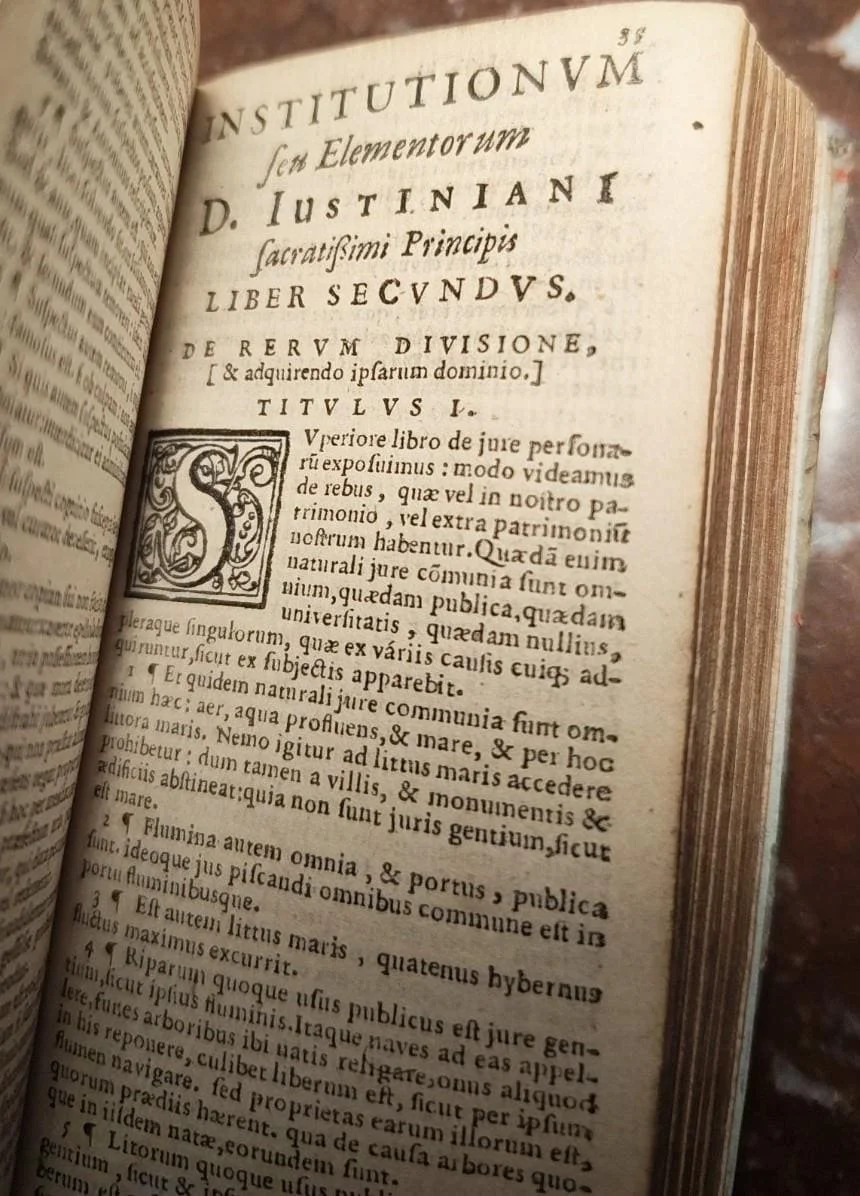 Image 1 of 10
Image 1 of 10

 Image 2 of 10
Image 2 of 10

 Image 3 of 10
Image 3 of 10

 Image 4 of 10
Image 4 of 10

 Image 5 of 10
Image 5 of 10

 Image 6 of 10
Image 6 of 10

 Image 7 of 10
Image 7 of 10

 Image 8 of 10
Image 8 of 10

 Image 9 of 10
Image 9 of 10

 Image 10 of 10
Image 10 of 10











Imperatoris Iustiniani Institutiones. Amsterdam: Jodocus Hondius, 1625. Pocket Roman Law in Medieval Vellum Binding
This 1625 Amsterdam edition of Justinian’s Institutiones brings together three centuries of European intellectual history in a single object. Printed by Jodocus Hondius, member of the celebrated family of mapmakers and scholarly printers, the volume presents the foundational text of Roman jurisprudence in a compact 16mo format designed for students, clerics, and practicing jurists.
A medieval manuscript reborn as a 17th century binding
The book is bound in reused medieval vellum, taken from a fifteenth century antiphonal. The exterior retains its liturgical origins with red staves, black square notation, and a large painted initial in purple and red. Such manuscript re-use was common in the seventeenth century but rarely survives with this degree of visual clarity and colour.
The binding thus becomes a dialogue between two legal and devotional worlds: the monastic culture of the late Middle Ages and the humanist revival of Roman law in early modern Europe.
A working copy with layers of marginal history
Inside, the text offers clear Roman type, wide margins, and visible chainlines characteristic of fine early seventeenth century Dutch paper. It also preserves a vivid record of use:
• Seventeenth century notes in Latin on pignus, novatio, obligatio, and other legal principles, almost certainly written by a law student or jurist engaging directly with the text.
• Later pencil sketches and caricatures, including one labelled “Rousseau...”, likely from the late eighteenth or early nineteenth century. These traces of Enlightenment humour create an unexpected counterpoint to the austere legal content.
The result is a book that reflects not only the study of law, but the human habits, distractions, and reflections of the people who carried it.
Condition
Very good for its age.
The medieval vellum binding is intact, with minor lifting at the lower spine revealing early sewing.
The manuscript leaf remains vivid with strong colour on the initial.
The interior is clean, gently toned, and structurally sound.
All pages are present with crisp impressions and fine paper.
Provenance and chronology
1625: Printed by Jodocus Hondius in Amsterdam.
Seventeenth century: Owned and annotated by a jurist or legal student.
Eighteenth to nineteenth century: Additional sketches and notes, including a caricature labelled “Rousseau…”.
This sequence of hands transforms the book into a layered historical object, bridging Roman law, medieval liturgy, and Enlightenment commentary.
Why this book matters
Justinian’s Institutiones is one of the pillars of Western legal tradition.
This copy elevates that significance by uniting three distinct intellectual eras:
• medieval manuscript art
• early modern legal humanism
• Enlightenment marginalia
A rare and emblematic example of how books travelled, were repurposed, studied, and reimagined over centuries. Perfect for collectors of Roman law, manuscript fragments, Dutch printing, or unique bindings with deep historical resonance.
This 1625 Amsterdam edition of Justinian’s Institutiones brings together three centuries of European intellectual history in a single object. Printed by Jodocus Hondius, member of the celebrated family of mapmakers and scholarly printers, the volume presents the foundational text of Roman jurisprudence in a compact 16mo format designed for students, clerics, and practicing jurists.
A medieval manuscript reborn as a 17th century binding
The book is bound in reused medieval vellum, taken from a fifteenth century antiphonal. The exterior retains its liturgical origins with red staves, black square notation, and a large painted initial in purple and red. Such manuscript re-use was common in the seventeenth century but rarely survives with this degree of visual clarity and colour.
The binding thus becomes a dialogue between two legal and devotional worlds: the monastic culture of the late Middle Ages and the humanist revival of Roman law in early modern Europe.
A working copy with layers of marginal history
Inside, the text offers clear Roman type, wide margins, and visible chainlines characteristic of fine early seventeenth century Dutch paper. It also preserves a vivid record of use:
• Seventeenth century notes in Latin on pignus, novatio, obligatio, and other legal principles, almost certainly written by a law student or jurist engaging directly with the text.
• Later pencil sketches and caricatures, including one labelled “Rousseau...”, likely from the late eighteenth or early nineteenth century. These traces of Enlightenment humour create an unexpected counterpoint to the austere legal content.
The result is a book that reflects not only the study of law, but the human habits, distractions, and reflections of the people who carried it.
Condition
Very good for its age.
The medieval vellum binding is intact, with minor lifting at the lower spine revealing early sewing.
The manuscript leaf remains vivid with strong colour on the initial.
The interior is clean, gently toned, and structurally sound.
All pages are present with crisp impressions and fine paper.
Provenance and chronology
1625: Printed by Jodocus Hondius in Amsterdam.
Seventeenth century: Owned and annotated by a jurist or legal student.
Eighteenth to nineteenth century: Additional sketches and notes, including a caricature labelled “Rousseau…”.
This sequence of hands transforms the book into a layered historical object, bridging Roman law, medieval liturgy, and Enlightenment commentary.
Why this book matters
Justinian’s Institutiones is one of the pillars of Western legal tradition.
This copy elevates that significance by uniting three distinct intellectual eras:
• medieval manuscript art
• early modern legal humanism
• Enlightenment marginalia
A rare and emblematic example of how books travelled, were repurposed, studied, and reimagined over centuries. Perfect for collectors of Roman law, manuscript fragments, Dutch printing, or unique bindings with deep historical resonance.

